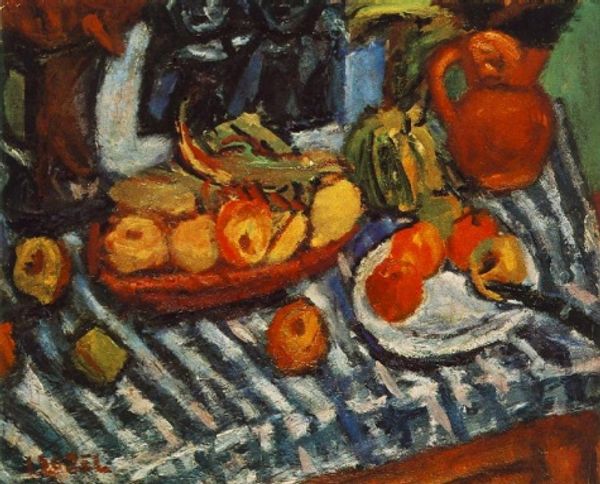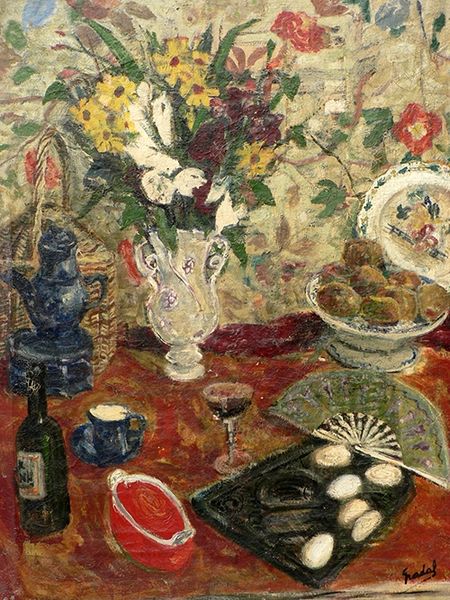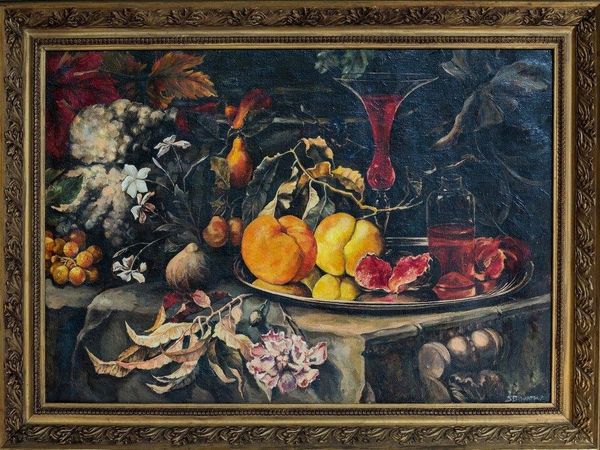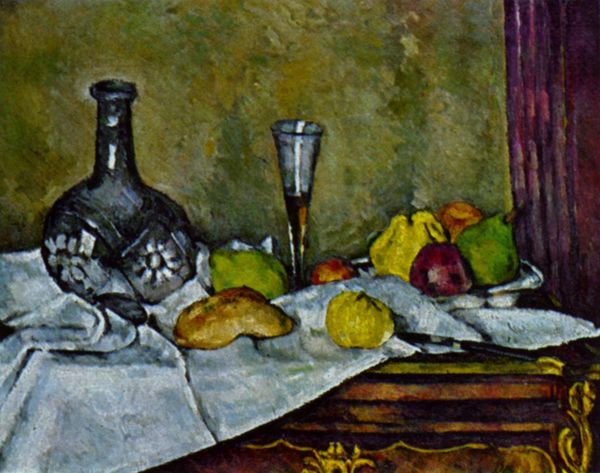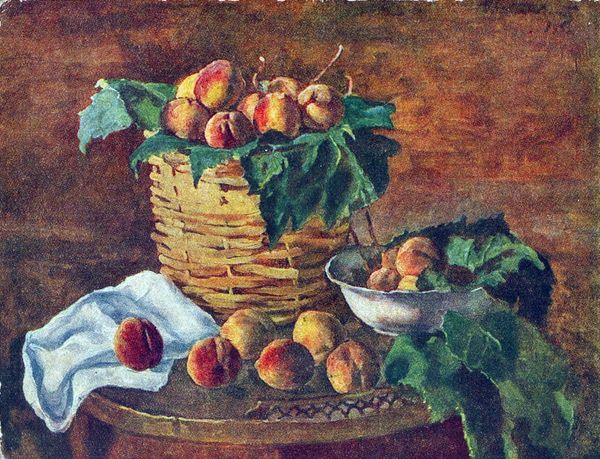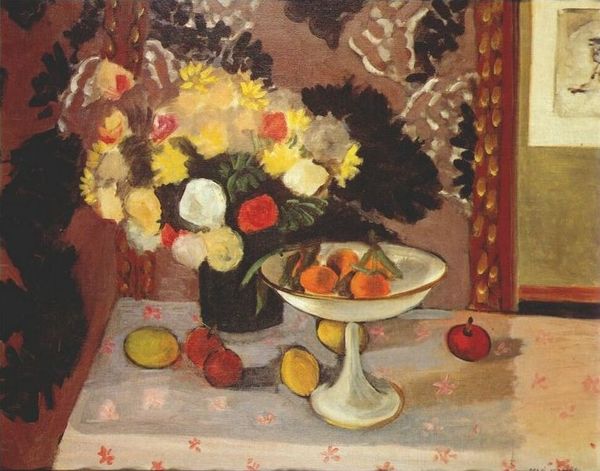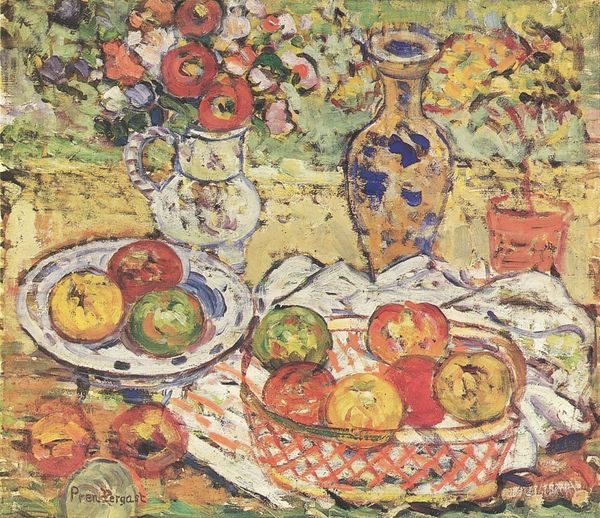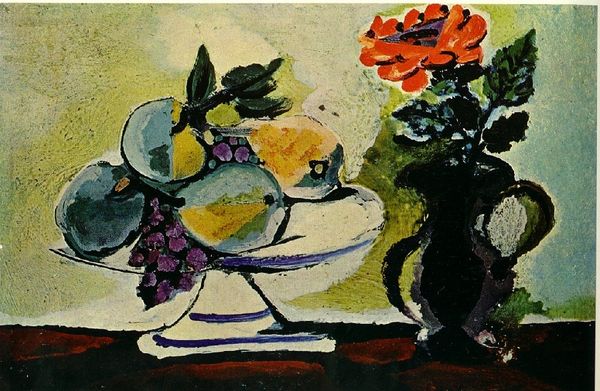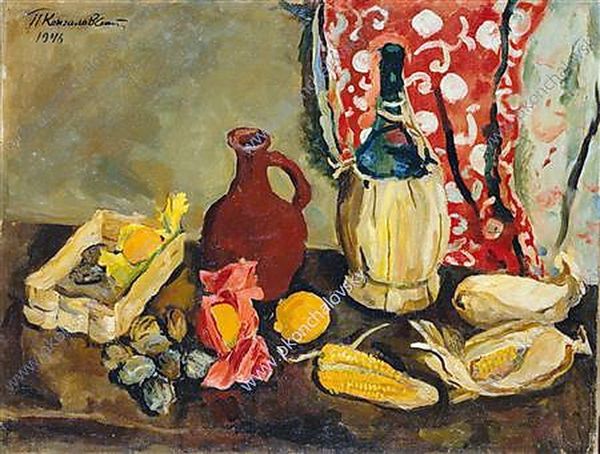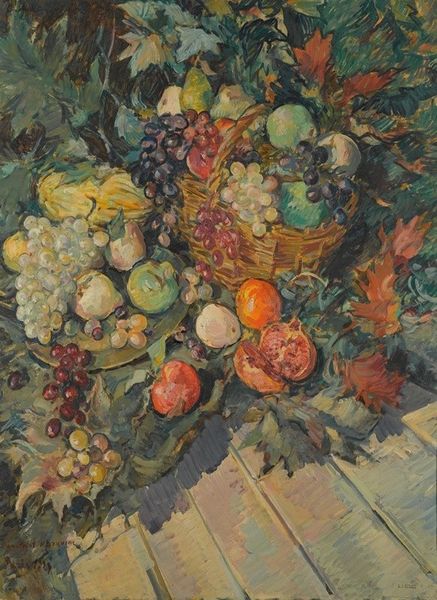
oil-paint
#
oil-paint
#
oil painting
#
naive art
#
symbolism
#
genre-painting
#
modernism
Copyright: Public domain
Editor: We're looking at Oleksa Novakivskyi's 1917 oil painting, "The Riches of Ukraine." It's a still life, absolutely brimming with fruit and flowers, with the most wonderful textures! How do you interpret this work? Curator: This painting presents Ukraine as abundant, literally overflowing with nature's gifts. Consider the sunflower presiding over the composition, a symbol deeply interwoven with Ukrainian identity – representing warmth, the sun, and by extension, life itself. The overflowing cornucopia of fruit reinforces the idea of fertile land and the prosperity it yields. How does that cultural resonance impact your understanding? Editor: I hadn’t really thought about it that deeply, but now that you mention it, it makes sense the fruit looks intentional... What about the almost dreamlike quality in the background? Curator: The stylized backdrop lends itself to symbolic readings beyond surface-level representation. The swirling patterns and muted tones might suggest not just physical location but also the collective dreams and hopes tied to this 'riches' promised. It's less about photographic accuracy, more about conveying essence. Editor: So the artist used recognizable objects, like fruit and flowers, to represent larger ideas of prosperity and national identity? Curator: Precisely! It’s like he is writing an ideological statement through carefully selected motifs. This connects to modernist trends and how artists across Europe explored cultural narratives via accessible visual vocabulary. Are you thinking of other similar works you've studied? Editor: I think I understand better. Thanks for clarifying the symbols; it changes how I see the whole thing. Curator: And it is precisely that transformation that art achieves. We recognize not merely what's shown, but all the memories that come together.
Comments
No comments
Be the first to comment and join the conversation on the ultimate creative platform.
